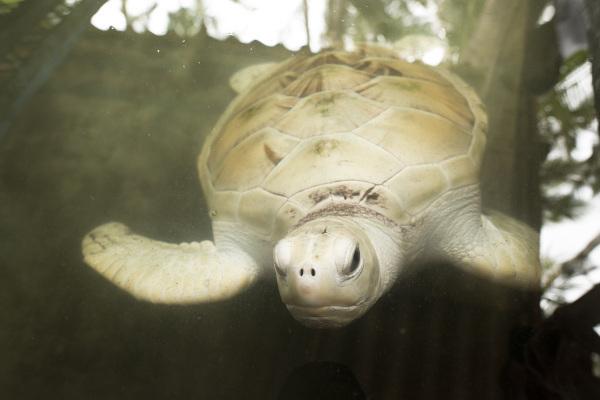O albinism is a genetic condition characterized by the reduction or absence of the production of melanin, a pigment that gives color to the skin, hair and eyes. There are different types of albinism, the most common being oculocutaneous. In this type, there are changes in skin color, hair and eyes, in addition to being observed, in in some cases, the complete absence of pigment, which determines white skin, white hair and eyes reddish.
Read too: Genetic Inheritance of Skin Color
Summary
Albinism is a genetic disorder that affects melanin production.
There are different types of albinism, with oculocutaneous albinism being the most common.
The albino person may have completely white skin and hair.
The absence or reduction of melanin makes the albino individual more prone to problems such as skin cancer and burns.
Albino people must be extra careful when exposing themselves to the sun.
Other animals can also be albinos.
What is albinism?
O albinism is a genetic disorder, present from birth, in which melanin production is affected. Melanin is a pigment present in human skin responsible for the different tones it acquires, as well as for giving color to hair and eyes.
In addition to being responsible for the color of the skin, hair and eyes, melanin guarantees our body's protection against ultraviolet rays. Therefore, due to the reduction or absence of melanin, the person with albinism is at greater risk of developing skin problems such as burns, cancer and premature aging.
Types of albinism
Oculocutaneous albinism: most common type of albinism, has autosomal inheritance recessive. According to the Brazilian Society of Dermatology, there are currently seven genes involved in albinism and, in each of these genes, different mutations may occur, thus determining different clinical manifestations. In some cases, the individual has a total absence in the production of melanin, which causes this person to have completely white skin and hair and ocular changes. In some cases, however, there is a partial deficiency in pigment production and, therefore, the individual has some degree of pigmentation.
Ocular albinism linked to the X chromosome: rare genetic disease that presents a pattern of X-linked inheritance, occurring more frequently in males. In this type of albinism, the eyes are the most affected, and the person usually has hair and skin that are normal or nearly normal in color. Individuals with this problem may have increased sensitivity to light (photophobia), involuntary eye movements, little or no pigment in the iris and foveal hypoplasia (central part of the retina does not develop properly, providing low acuity visual).
Hermansky-Pudlak Syndrome: rare syndrome characterized by oculocutaneous albinism, hemorrhagic diathesis (spontaneous bleeding with no apparent cause or more intense bleeding after trauma) and, in some cases, pulmonary fibrosis, immunodeficiency or granulomatous colitis. The syndrome has a high incidence in Puerto Rico and is an autosomal recessive disorder.
Chediak-Higashi Syndrome: very rare autosomal recessive inheritance characterized by partial oculocutaneous albinism, increased risk of develop infections and presence of giant inclusions in peripheral blood leukocytes and in most cells.
Read too:Dominance and recessivity — understand the manifestation of characteristics
albinism treatment
Albinism is a genetic disorder that does not have, so far, available treatment. However, it is important that the patient undergo medical follow-up with dermatologists and ophthalmologists. Follow-up with a dermatologist is necessary due to the greater sensitivity of the skin of these individuals, which makes them more susceptible to skin problems, such as cancer and burns.

As the absence or reduction of melanin interferes with the protection of the skin against UV rays, it is essential that the an albino individual to take extra care of your skin. It is important to avoid the sun exposure and always use sunscreens. Clothing that covers a large part of the body, hats and sunglasses are also recommended when exposure is needed. Also, as the production of vitamin D is directly related to sun exposure, albino individuals may need supplementation. THE vitamin D supplementation it is necessary to prevent, for example, the development of bone problems.
As albinism also causes eye impairment, it is important that the ophthalmologist be seen regularly. This professional may indicate, for example, the adoption of glasses that help reduce light sensitivity and provide better vision.
Read too: Hemophilia — X-linked genetic disease
Albinism in other animals

In addition to the human being, the albinism can also affect other animals. As in humans, animals with albinism have compromised melanin production and, therefore, have no pigmentation. In the case of animals, the lack of coloration can be harmful, making it difficult, for example, to camouflage of some species. Albinism can also affect the animals' eyes, causing visual difficulties, which can impair survival.
By Vanessa Sardinha dos Santos
Biology teacher

